User Experience Sorcery in the Realm of Energy
The First Insight
Her: Did you just say hours?
Me: Yes, why not?
Her: Sure, we can probably go up to page 5. How many are there in your booklet?
Me: 38…
Her: … ha… Haha! … right…
When I was around 21 years old, I volunteered to create the students welcoming booklet for my school institution. As I took care of the content, I asked my girlfriend at the time, who was a graphic designer, to help me on the page editing. For me, three to four hours would be more than enough, which, when I let her know, made her look at me with owl eyes and laugh.
Me: Are you making fun of me?
Her: No, no, you are just funny. This isn’t a three-hour job, Raphaël.
Me: How much time would we need then?
Her: I don’t know…three or four days should be more appropriate.
Me: Ha… ha ha…right!
Her: What’s the problem?
Me: Printing starts Monday morning.
Her: But it’s Friday night!
Me: …
Her: Just give me your text and pictures.
And there we went. I remember sitting next to her, as she was enhancing every photo, changing the tone, contrast, removing facial defaults, working with fonts and colors, crafting the iconography...I was observing like a child may observe an adult. And slowly, a feeling arose. Consistent visual rules, a color palette, profound page templates… what she was doing seemed magic to me. And yet, prior to witnessing the effort and skills it required, I thought it was easy. I had just stepped out of the land of unconscious incompetence. In the end, it took us the full weekend, from 8AM until 10PM to finish the best-looking booklet the school had ever had. Had I known how meaningful this experience would have become to me, I would certainly have offered her a larger bouquet of flowers the next weekend.
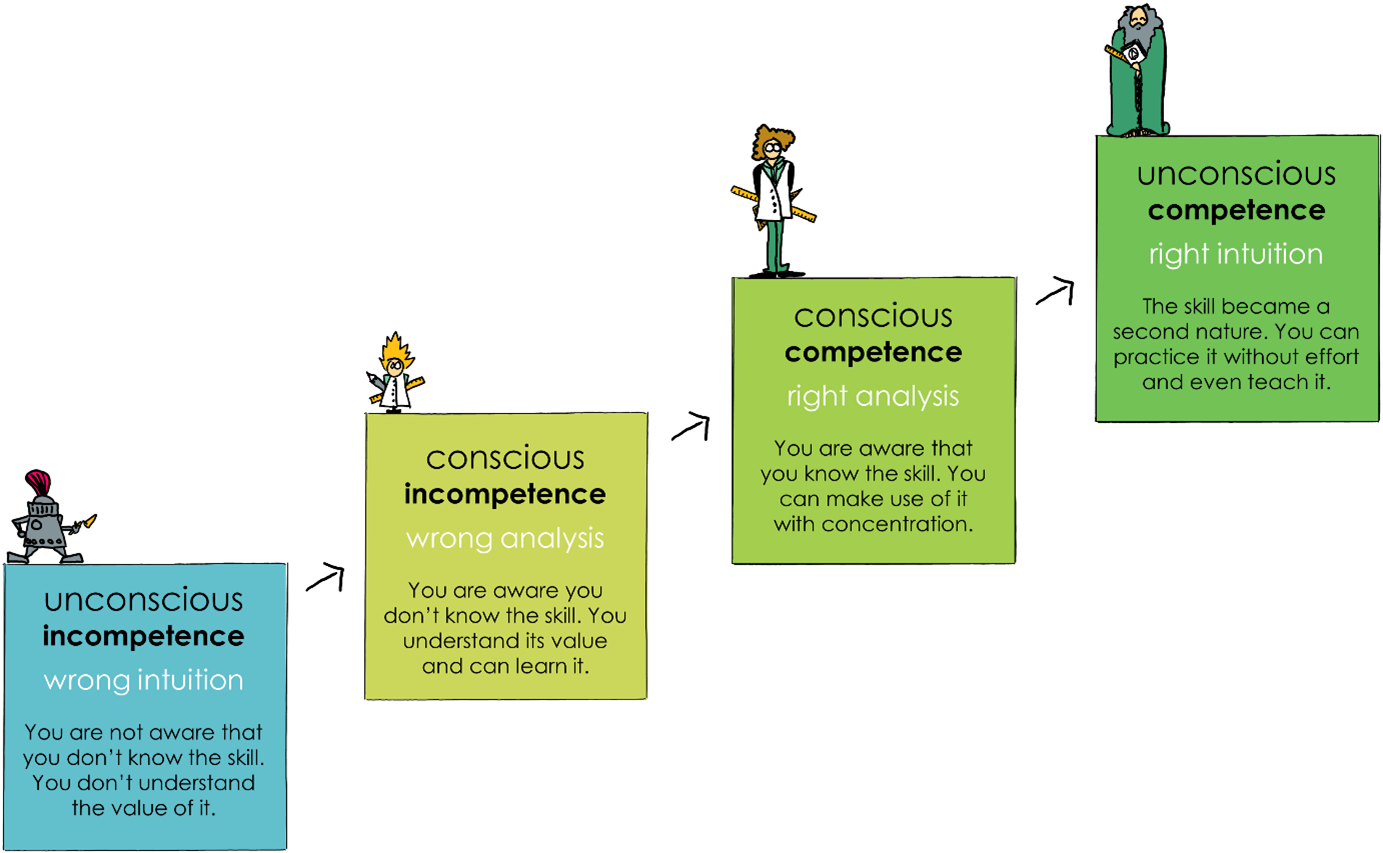
User experience (UX) is what a human being experiences as they use something such as a tool, a service, or a software. You see, we derail from the world of pure objectivity, measurements, and scientific truth, to dive in the world of subjectivity, emotions, and human truth. Yet, there is another overarching truth: commercial success.
Research and Design
Research and design are the two sides of the UX coin. A team of solely researchers will build a structured knowledge and precise understanding of the user’s problems (what is truly valuable to users and customers) but won’t be able to translate that into powerful and meaningful experiences. The product will probably be arid or unusable. A team only made of designers will make a smart and beautiful product, but probably miss the essence of the value, as insights and user knowledge will be vague and mostly made of assumptions or team beliefs.
Combine the two however, and you will optimize your chances to craft magic. First understand what you really need to know to build a powerful, pertinent, and valuable product, then design it, and finally, evaluate the design.
Research is about questioning, and structuring users’ reality into knowledge, while design is about crafting information to build an intuitive and fluid experience.
Note that UX goes much beyond visual design. UX activates silent emotions that emerge with usage and generates not only a sense of meaningful beauty, but meaningful empowerment. It goes from the realm of contemplation to the one of interaction and control.
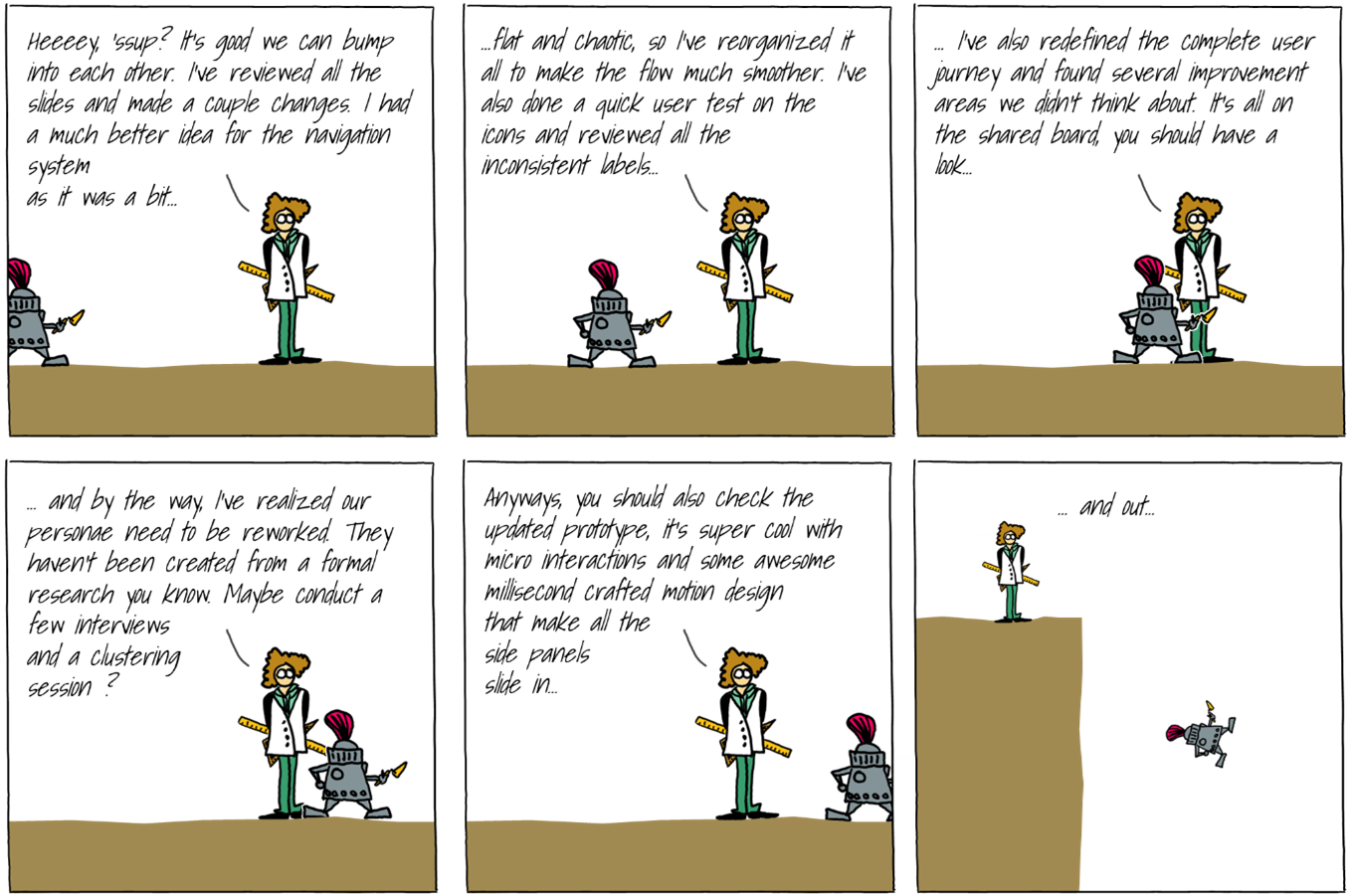
The Spirit of Design
UX in the realm of energy doesn’t mean the same as for a UX agency, or a software manufacturer. But there is one common thing that manifests itself in various tones: the spirit of design, also known as “design thinking.” This is what Steve Jobs had at heart when he said “Design is not how it looks and feels like. Design is how it works”. Design thinking is a way of thinking through a design prism, to serve the customer by offering a unique experience.
In a sense it means seeking elegance in the interactions between the mechanics of the brain and the mechanics of our surrounding physical reality. It is a mental language, where shapes, principles, patterns, structures, and projections of interactions are coming together to produce a solution to a properly defined problem. So, it is a specific way of seeing things, and of constantly questioning and criticizing what exists, to think of potentials, and imagine a better world.
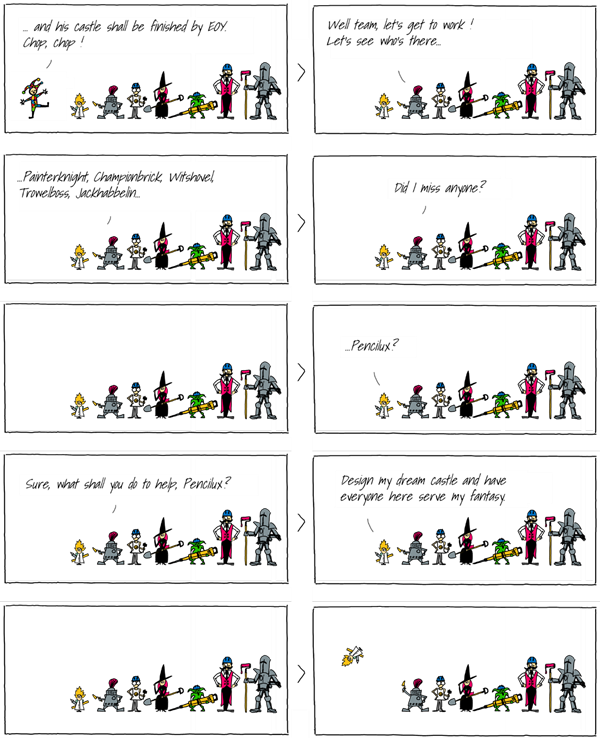
Fear and Ego
The first week I joined Schlumberger, I discovered the Engineering and Portfolio organization. A two-legs organization designed to think and craft the products. I quickly discovered that the teams often knew the customers’ expectations, but not precisely the needs of their users and how to translate them into powerful and consistent designs.
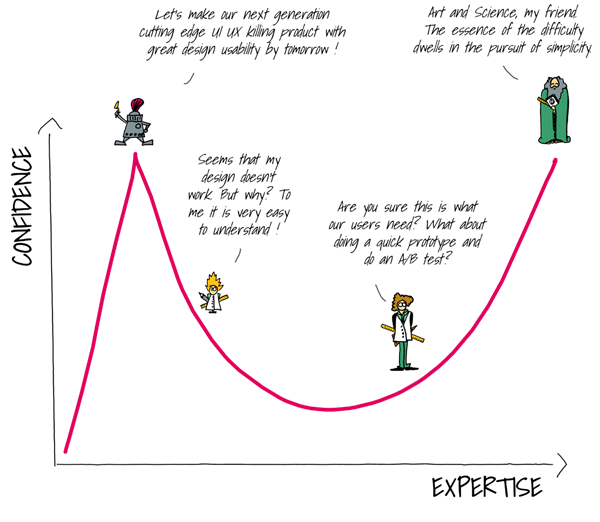
The Dunning-Krugger effect
When someone is exposed to a new technology, there is usually an initial time for fear and rejection, then reconsideration, and finally, for enthusiasm. UX is no different. Discovering this discipline provokes emotions that require time and repeated exposure to reach higher levels of adoption. When there is a limited number of UX professionals, the exposure to UX is much more limited, and therefore the cultural change takes a lot more time to infuse.
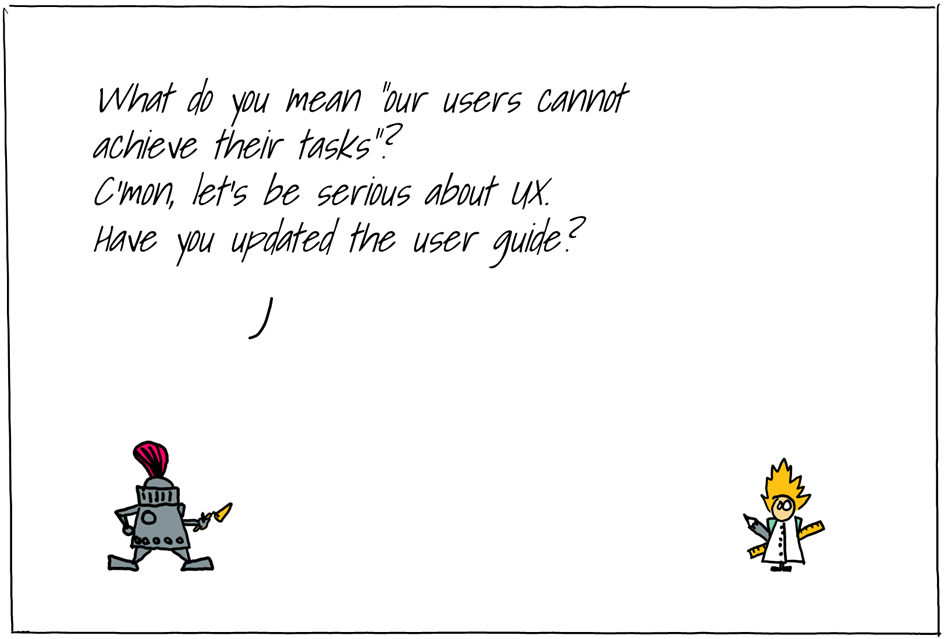
Across the globe, I have heard from many of these UX sorcerers that they were perceived as mages of disturbance. Slowly, however, this feedback disappeared, and the call for mages of possibilities emerged. I have seen the UX Design mindset grow over the past few years and move towards higher levels of maturity. For instance, we have created and grown our own design language system, and all technology centers are pursuing the effort to bring UX at managerial levels.
The Marriage Between Geology and UX
Along these past seven years, I had the pleasure to interact with many domain experts, some with whom we established strong trust, mutual understanding, and respect.
Interestingly, I initially established these connections with geologists. Maybe there is a very natural and intimate approach to the beauty of the earth that binds us together. They were probably sensible to the hidden mechanics of meaning that emerges from our hearts when nature unfolds itself.
I am a man of meaning, passionate about crafting, and driven by the pursuit for elegance. But I am probably primarily inhabited by this continuous observation of the world, and how rules and conceptual mechanics can be unveiled, from the shape of a tree to the revelation of a fractal.
Here are two examples of this marriage between the geoscience domain and UX:
The first one is called the “Stratigraphic navigator”, which is a patent that we co-signed with a geologist advisor. It is a unique approach, where the chronostratigraphic reference chart is merged to any stratigraphic column in a central and modern tool that triggers dedicated workflows depending on the domain of interest and context of the application.
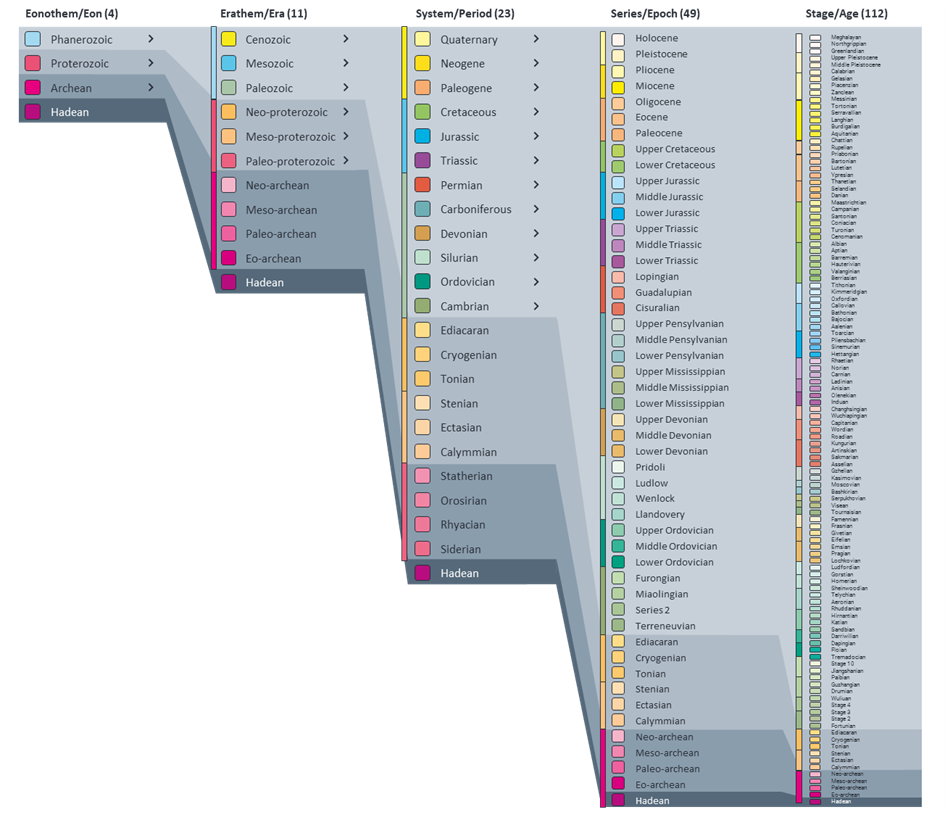
Stratigraphic navigator
The second example is the “Monitoring Dashboard” of Celsius Energy, which is a digital dashboard that we designed with the CTO and the digital team of the company, to show the hidden reality of Celsius Energy’s shallow geothermal solution (metrics, temperatures, flows…) in one simple screen.
Monitoring Dashboard
These examples illustrate the importance for UX professionals to dive in the domain, so that they can effectively guide the product definition. It is unconceivable to me to hire UX professionals and count only on their technical skills: they must learn the domain to understand the language of Schlumberger so that their unique way of thinking can be used righteously.
Make our Garden Grow
What could we do more as an organization to make the best use of the UX discipline? Focusing on headcount is important, but not enough. Structuring this force is also necessary to set the ground for the emergence of an overarching design vision. Design thinking can bring to any senior management team a different perspective to a digital strategy. And I am not only talking about structuring UX at higher managerial levels, but also empowering a well-prepared global design vision.
What shape could this take? What value could this bring in the longer term? These questions are difficult to answer. Elevating UX from a buzzword to a corporate mindset is a long journey. It requires patience, and risk taking. But it’s worth it, because if UX is a sorcery, who wouldn’t want to make some magic?
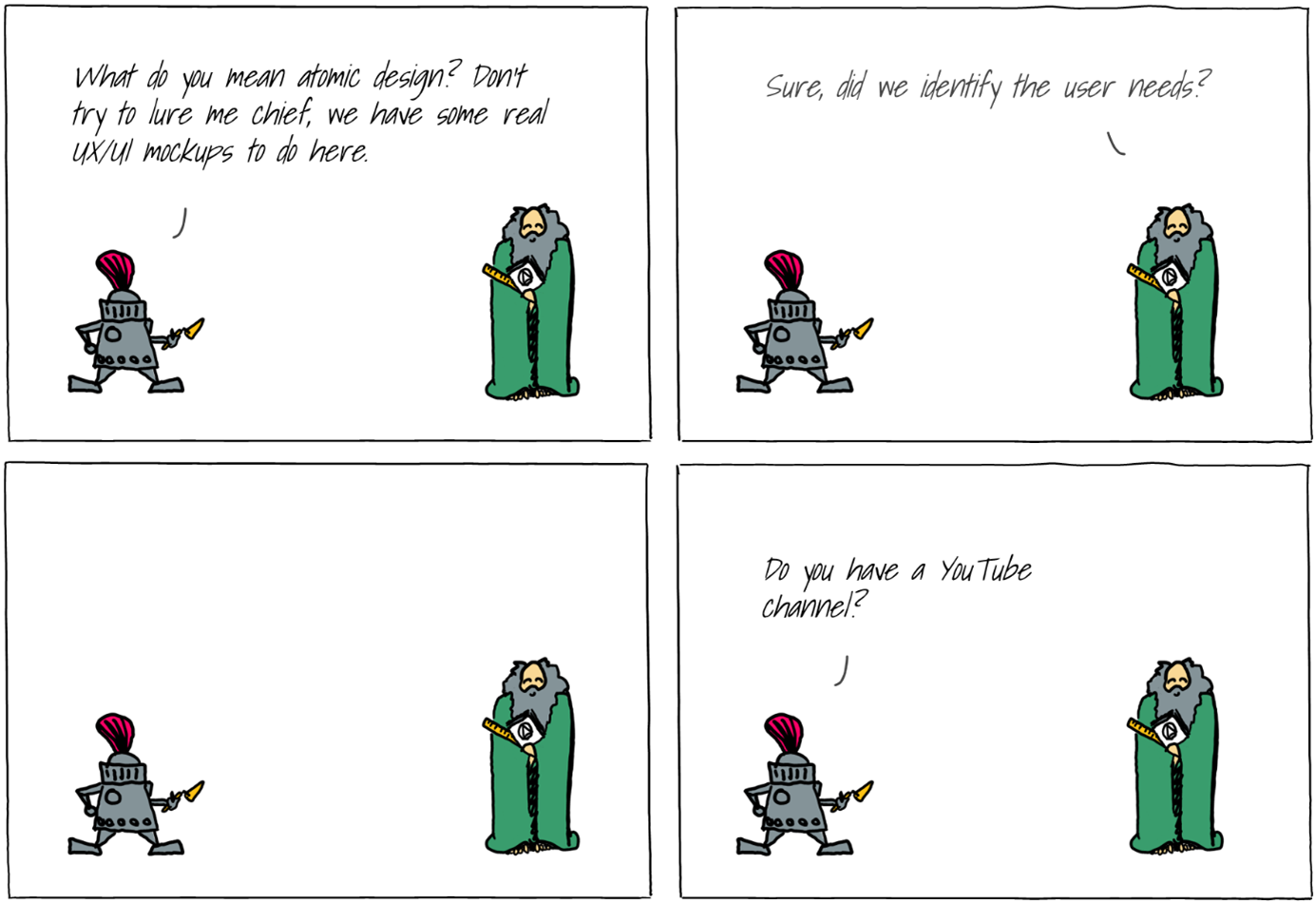
About the author: Raphaël Vonthron is a Lead User Experience Strategist with over 16 years of experience in multiple industries. Passionate about science, games, sports, music, storytelling, and a couple other things including fantastic rock operas, he has a Master of Business Management in Telecommunication, and a Master of Arts in Digital Media. Raphaël started his professional journey in the software industry working for Microsoft, discovered the world of premium communication agencies, contributed to multiple projects in Digital Service companies, got a taste of the cardiovascular management domain, became an expert consultant and UX teacher for student engineers, and eventually joined the Schlumberger Montpellier Technology Center to embrace the realm of geoscience and new energy.
Disclaimer: All opinions expressed by the blog contributors are solely their current opinions and do not reflect the opinions of Schlumberger or its affiliates. The blog's opinions are based upon information they consider reliable, but neither Schlumberger nor its affiliates warrant its completeness or accuracy, and it should not be relied upon as such.


